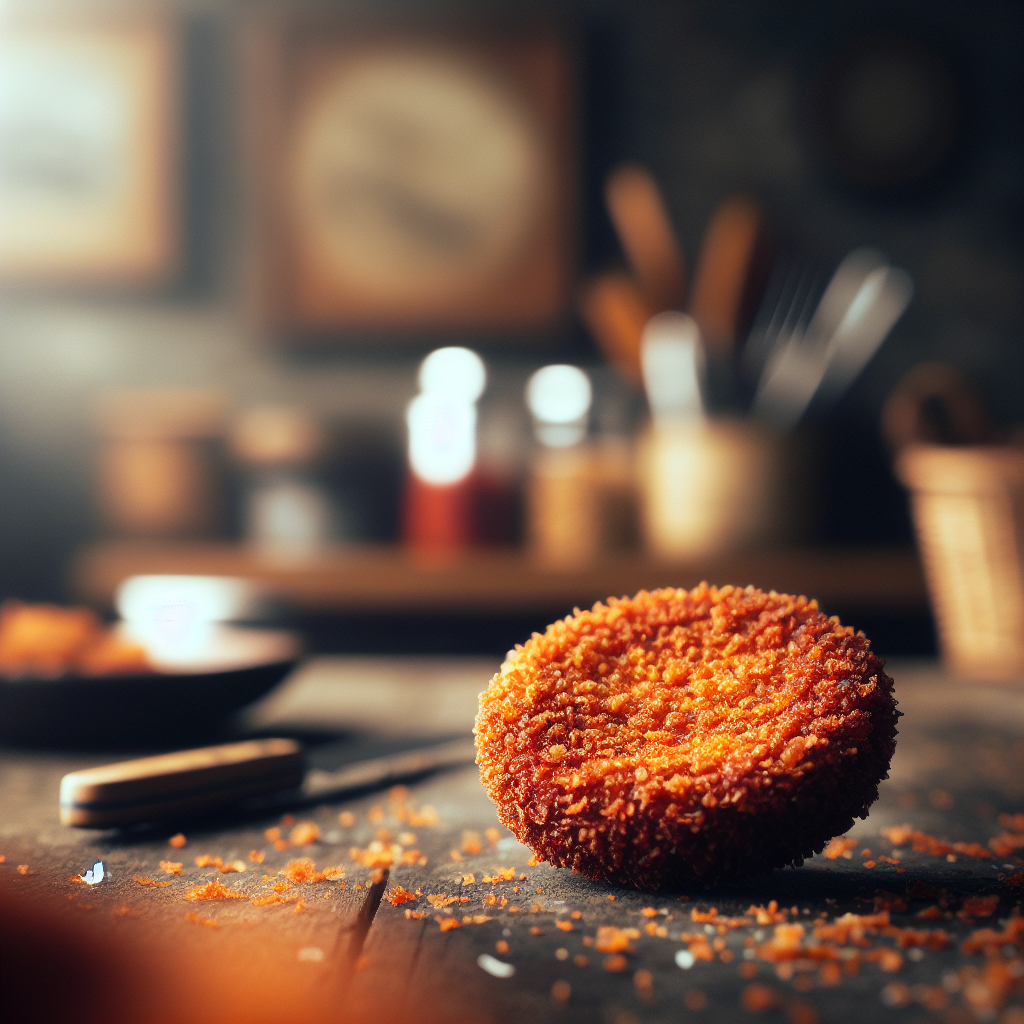Bite into a warm, crispy shell to discover spicy, savory flavors that bring you to the lively streets of Salvador, Brazil. Experience the taste of acarajé, a cherished street food that is as rich in cultural history as it is in taste. With its deep-fried golden shell and a spicy shrimp filling, acarajé is more than just food; it’s a celebration of Afro-Brazilian heritage in a delicious form.


Recipe
Ingredients:
- 2 cups dried black-eyed peas, soaked overnight and skins removed
- 1 medium onion, chopped
- 2 cloves garlic, minced
- Salt to taste
- Oil for deep frying
- 1 cup dried shrimp, soaked and chopped
- 1/2 cup vatapá (spicy paste made from bread, shrimp, coconut milk, finely ground peanuts, and palm oil)
- 1/2 cup caruru (okra stew with shrimp, palm oil, and toasted nuts)
- Hot pepper sauce, to taste
- Green and red tomatoes, sliced
- 1 cup cooked whole black-eyed peas for garnish
Instructions:
- Blend the soaked black-eyed peas, onion, and garlic to a thick paste. Season with salt.
- Heat oil in a deep fryer or large pan to 375°F (190°C).
- Form the paste into balls or ovals and deep fry until golden brown.
- Split the acarajé and stuff with vatapá, caruru, shrimp, hot sauce, and sliced tomatoes.
- Garnish with whole cooked black-eyed peas.
- Serve hot and enjoy!


Culture and History
Acarajé originates from a rich cultural background. It came to Brazilian culture over 300 years ago through enslaved Africans from Nigeria. It shows the endurance of Yoruba culture, adapted by Afro-Brazilian women known as “baianas.” These women, in traditional white lace, sell acarajé from street stalls, their attire symbolizing purity and peace.
Making acarajé calls for patience and skill. The black-eyed peas must be soaked overnight and skinned before grinding into a paste. The cooking process takes hours, but the resulting treat is worth the wait. In Brazil, an acarajé’s price ranges, but typically it cost between 1 to 3 USD for one, depending on the size and fillings.
Acarajé isn’t just a snack; it’s a cultural icon. It is often enjoyed during festive events and connects deeply with the Candomblé religion, offered to deities known as orixás. Iansã, the goddess of wind and storms, is closely associated with acarajé, and eating it can be a form of spiritual communion.
The dish has evolved, with contemporary versions including fillings like sun-dried tomatoes or arugula pesto. Yet, the essence of acarajé remains the same. It’s a flavorful experience that celebrates a culture that has greatly influenced Brazilian society. Next time you want to try something unique, make acarajé at home. You’ll savor Brazil’s heart and soul.

